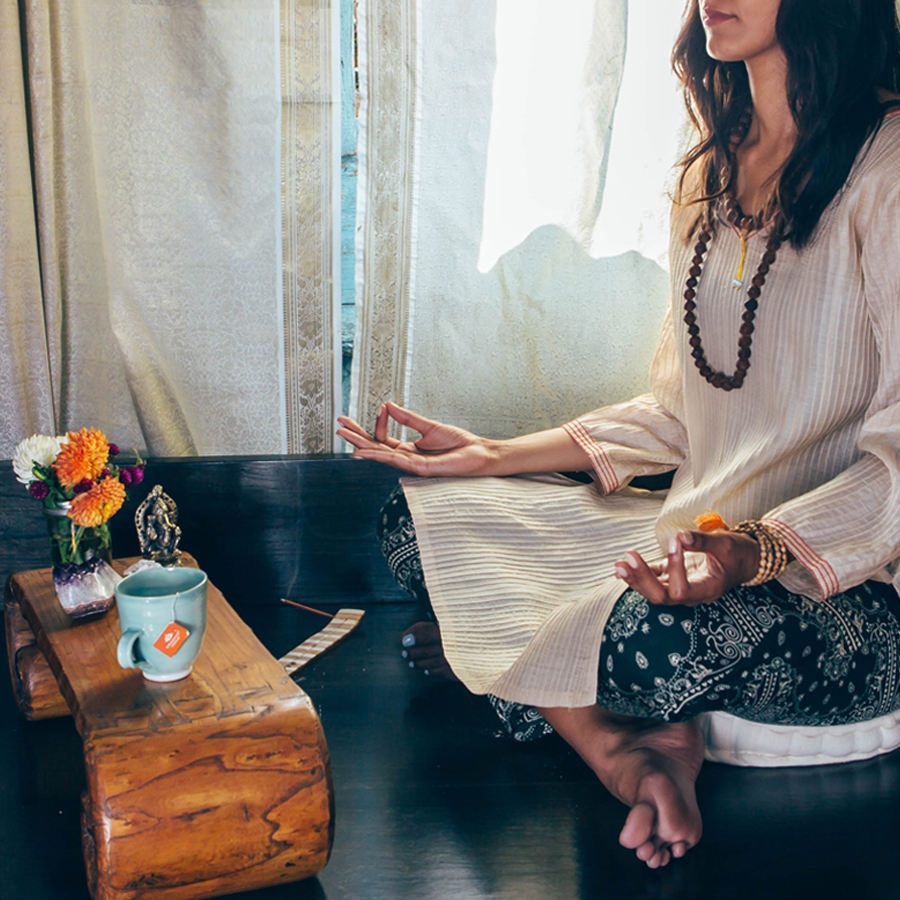INTRODUCTION TO MEDITATION:
Nothing is more natural than the rhythmic rise and fall of our inhale and exhale. The act of breathing is something we normally don’t even notice or think about, yet we do it several times a minute. Simply turning our attention toward the cycle of our breath takes us into a calm, natural place. When we do this, we are engaging in the profound internal practice of meditation.
We may feel intimidated by the thought of meditating – believing it requires a certain body position, a certain state of mind, and that the atmosphere must be just right. These are obstacles that may keep us from doing one of the most simple and natural activities that we are capable of – being with ourselves.
We can overcome these obstacles through a dedication to meditation. It is a worthy endeavour, due to the many benefits that meditation offers. Research consistently concludes that meditators experience: Decreased stress levels, heightened immunity, higher quality sleep, increased focus, improved memory, a baseline of well-being, happiness and compassion.
INSTRUCTIONS
Follow these simple instructions to begin your meditation practice:
- Find a comfortable seated or reclined position.
- Close your eyes and turn your attention towards your breath.
- Establish a comfortable and steady rhythm of breathing: inhale, pause, exhale, pause…
- Each time your mind wanders, let the thoughts pass and return your attention to your breath.
- When emotions and sensations arise, gently return your attention to the sensation of breathing.
- Continue this meditation for 5-10 minutes per day, and gradually increase the length of your meditation. Over time you will find the right amount of time that works for you.
There are several more complex meditation techniques, from sitting in “lotus” position for hours while breathing in a complex rhythmic pattern without so much as scratching an itch, to chanting Vedic mantras while holding a specific mudra. Yet when it comes down to it, if we can breathe and notice the pause between our breath, then we can meditate – in fact, this is a profound meditation. Adding a variety of other techniques to your base practice can be quite inspiring.

Simply Be.
The goal of meditation is to come back to ourselves and to our true nature. Our breath brings us to the doorway, and the pause between the breath opens the doorway. Once there, simply allowing ourselves to fall into this opening and being aware is all there is to it.
In this place of awareness, we can gently ask ourselves, What is here? What is arising? We may notice that our breath is here, and possibly a thought or a feeling. What is underneath even these activities? Where do they arise from? Is there an inner peace underneath all of the activity?
Meditation is about noticing, about awareness and about noticing our awareness. As we cultivate our practice of meditation, we are brought deeper into ourselves and into the nature of our being. We may feel that the act of being is a waste of time; yet soon enough we realise that it is as important as sleeping, when we take a complete rest from our world. Having this time with ourselves, in a conscious way, allows us to be more alive and centred during the active moments of our day. When we have this quiet time with ourselves, we can then breathe into anything that appears in life, whether experiences are joyous or challenging. Having a meditation practice as an ally gives us an entryway into knowing who we really are, and a place from which to explore our eternal nature, which is undeniably present.
JOIN OUR HEALTHY, CONSCIOUS LIVING REVOLUTION
Subscribe to our newsletter for up-to-date news, new products, special offers and be apart of our beautiful community inspiring True Wellness for all.



